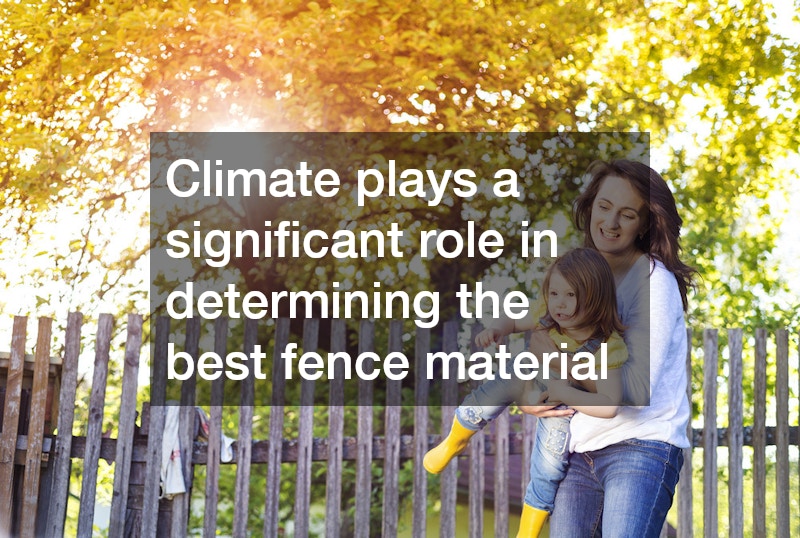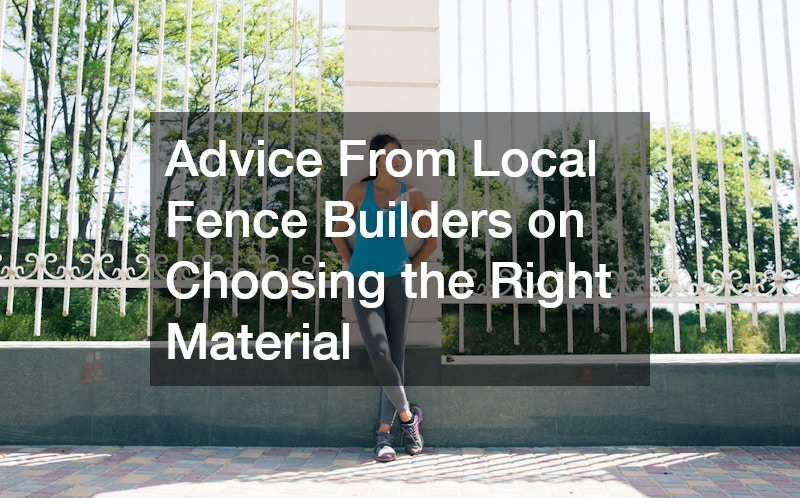There are multiple key factors to consider when choosing the right fence material. Learn the answers to common fencing questions, drawing insights from local fence builders.
Prioritize Durability
When it comes to durability, several fence materials stand out. Wood, for example, can be treated to withstand the elements, but its longevity can greatly depend on the type of wood used and how well it is maintained.
Metal fences, such as chain link or wrought iron, are also known for their resilience and can last decades with proper care.
Vinyl fencing has emerged as a popular option for homeowners looking for an almost maintenance-free solution. Its resistance to rotting, warping, and insect damage makes it a favorable choice, especially in areas prone to such issues. Another option worth considering is composite fencing, which combines wood fibers and plastic, providing both aesthetic appeal and impressive durability.
Ultimately, the best choice will depend on your specific needs and local conditions. According to local fence builders, those living in areas with more extreme weather conditions might lean towards metal or vinyl options due to their superior performance in harsh climates.
Consider Climate
Climate plays a significant role in determining the best fence material for your property. For instance, regions that experience heavy rainfall and humidity might see wood fences deteriorate faster if not properly treated or maintained. On the other hand, vinyl and metal options tend to resist moisture better than wood.
In arid or extremely sunny areas, wood fences can warp or crack under intense heat. Many local fence builders recommend specific wood treatments to mitigate these effects, but choosing a more resilient material like vinyl can be a wise decision in such environments. Similarly, areas prone to snow and ice may benefit from a more robust fence material that can withstand heavier weights.
Ultimately, it is crucial to consult with local experts to assess how your region’s weather conditions will influence your fence material choice. This will ensure that you select a fence that will not only last but also maintain its appearance and functionality over time.
Compare Pricing
When considering the costs of various fence materials, it is essential to evaluate both the initial investment and the long-term expenses. Wooden fences often come at a lower upfront cost, but the maintenance and repair costs can add up over time. This makes them less favorable for those seeking a long-term solution.
In contrast, vinyl and metal fences may require a higher initial investment, but they typically offer lower maintenance costs, making them economical in the long run. Local fence builders often encourage homeowners to weigh these costs carefully, as choosing a lower-priced material might lead to higher expenses down the line.
By understanding the initial costs versus long-term expenditure, homeowners can make informed decisions about which fence material best fits within their budget and overall plans for their property. This consideration is vital for anyone looking to balance aesthetics, durability, and cost-effectiveness.
Remember Maintenance
Maintenance varies widely between different types of fencing materials. Wooden fences require regular treatment to prevent rot, pest infestations, and discoloration. Local fence builders often recommend staining or sealing the wood every few years to prolong its life and maintain its beauty.
Vinyl fencing, on the other hand, is generally considered the most low-maintenance option available. It only needs occasional cleaning with soap and water, making it ideal for busy homeowners who may not have the time to dedicate to fence upkeep. Metal fences also require less maintenance than wood, but may need occasional rust treatment depending on the exposure to moisture.
Ultimately, the amount of time and effort you are willing to invest in fence maintenance should heavily influence your choice of material. The easier it is to maintain, the longer your fence will likely last, making it crucial to consider your lifestyle when making a decision.
Enjoy Aesthetics
Aesthetics play a vital role in selecting the right fence material. Homeowners also need to consider how their choice will complement their home’s style and landscaping. Wooden fences can offer a rustic charm, while vinyl comes in various colors and styles to fit modern preferences.
Metal fences, like wrought iron, contribute a classic and elegant look, but they may not suit every type of property—especially those with a more traditional style. According to local fence builders, selecting a fence style that aligns with your home’s architecture is critical to enhancing its curb appeal.
Moreover, the choice of material can impact the overall feel of your outdoor space. For instance, a high, solid wood fence can provide privacy while contributing to a cozy atmosphere, while an open metal fence might foster a more airy and spacious environment. Understanding these aesthetic implications can help you create the perfect outdoor setting.
Choosing the right material for your fence is essential for longevity, appearance, and value. By considering these important factors, you can make an informed decision that aligns with your needs.

